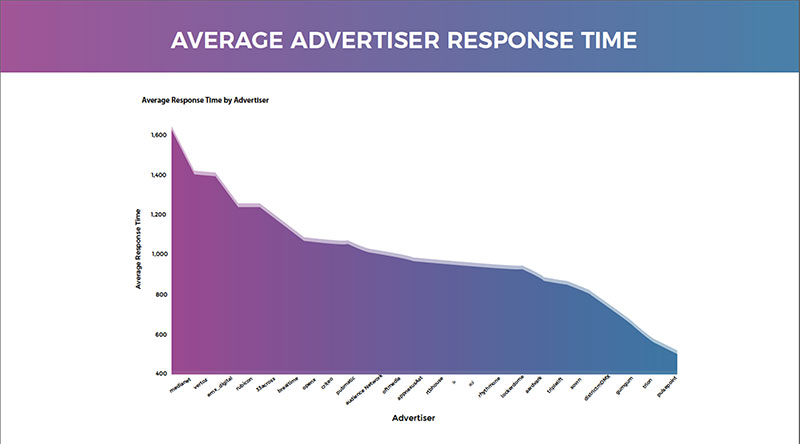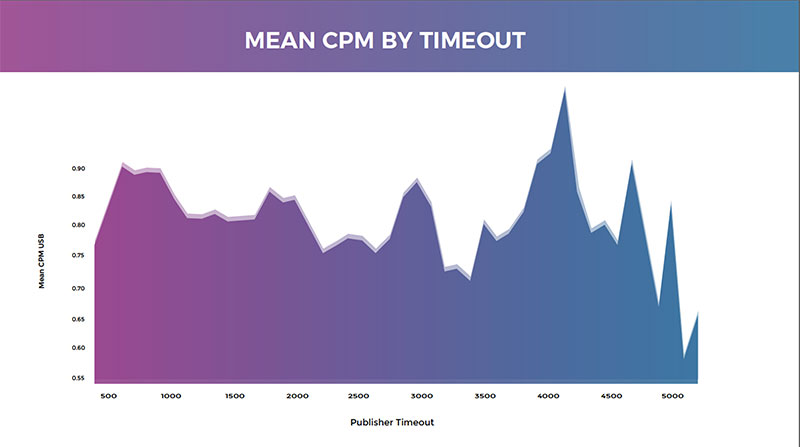
Publishers shouldn’t have to trade-off providing users a quality experience with maximizing yield. But often that’s exactly the way it is—especially in the world of header bidding.
Given the amount of time it takes for multiple auctions to take place at once, producing the highest bid from demand sources ultimately leads to increased latency. A recent report from MonetizeMore shows exactly how publishers who set aggressive timeouts—around 500-600ms—to improve page loads end up missing out on the highest bids from the top demand sources. The report reveals that Tier 1 demand partners need much more time to bid.
We had a chat with Brandon Gains, VP of Marketing at MonetizeMore to find out exactly what his company learned about average advertiser response time and mean CPM timeout while looking at data from the over 300 publishers that they work with. (See the interview after the charts.)
Lynne d Johnson: So what’s the premise behind your study?
Brandon Gains: The logic behind this is publishers want the smallest timeout to deliver the best user experience so everyone is optimizing towards 500 ms from the inventory side. This is based on the bar set by Google with their AMP project and other major players in the space. But advertisers need more time to bid for publishers to earn more revenue.
LdJ: How bad is it?
BG: Ad ops needs to extend timeouts to give advertisers the necessary time it takes to bid on their inventory. Tier 1 Demand partners need more time (889ms to 1157ms) to bid so publishers should set a timeout above 1157ms to bring in higher bids.
LdJ: Which demand partners are we talking about here?
BG: Well if you look at the visualizations, you’ll see that Medianet is at 1500ms. We’re seeing that all Tier 1 demand sources—like AppNexus and Rubicon—need a little more time. With the sweet spot around 1300ms timeout, you’ll better include all Tier 1 advertisers and garner higher bids. At 500ms, publishers are only getting a few advertisers who have time to bid before the set timeout hits.
LdJ: What should publishers do to make sure they’re getting the best bids for their inventory?
BG: They shouldn’t have a fixed timeout. They should always be testing. Especially when you look across devices. Tablet revenue continues to outperform desktop and mobile inventory across different timeout ranges and geos. But overall, earning more from your ad units means having a bigger timeout. When you open up to more advertisers you’ll see an increase in your CPMs. Of course, there are other priorities you have in terms of consumer experience, so you don’t want to go to crazy with it.
LdJ: Have you guys tested this yourself?
BG: Sure. We’re not just a vendor, but we are testing this ourselves as publishers with our own sites. We do a lot of sandboxing before rolling out our products to our publisher partners. When testing, publishers have to ask themselves, “Is this working? Is this adding value?” So raising the overall timeout is the way to go to give all of your bids enough time to return, but also watch page load performance as you’re testing.
To download the full report that includes advertiser response time by country and device, mean CPM by timeout and device, advertiser average CPM by country, and mean CPM by country, visit MonetizeMore. These reports will be released on a monthly basis.


